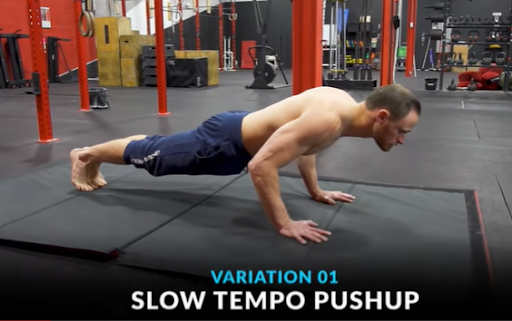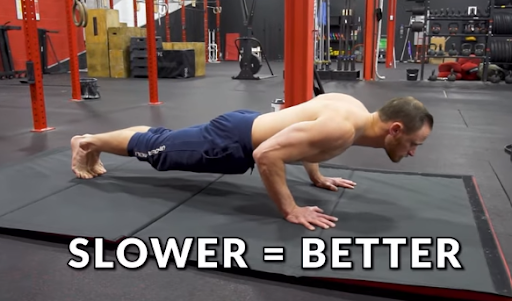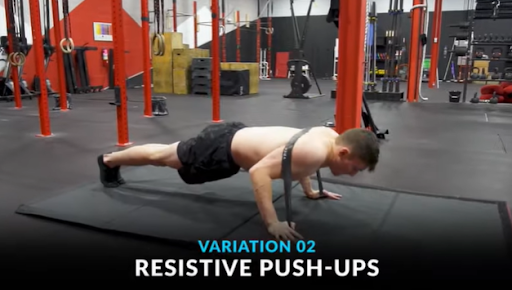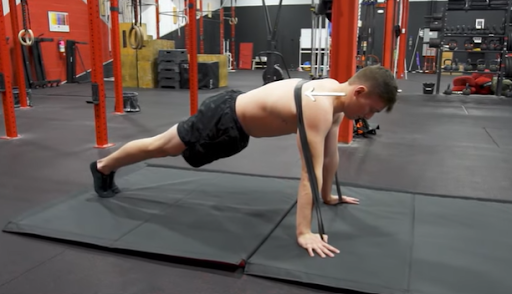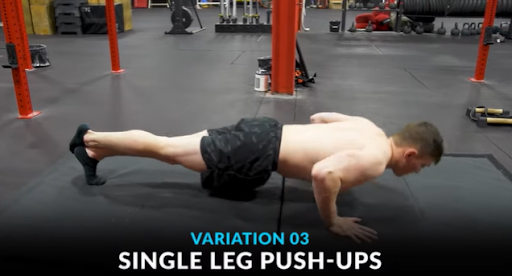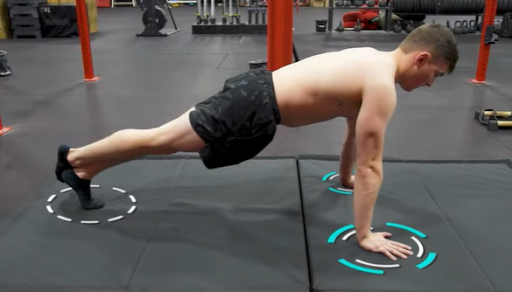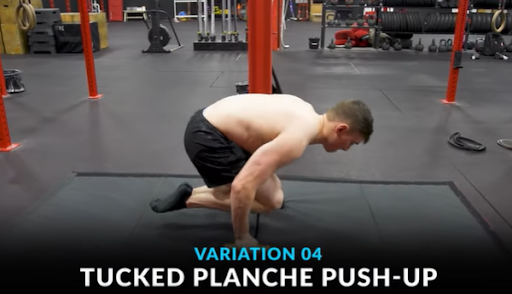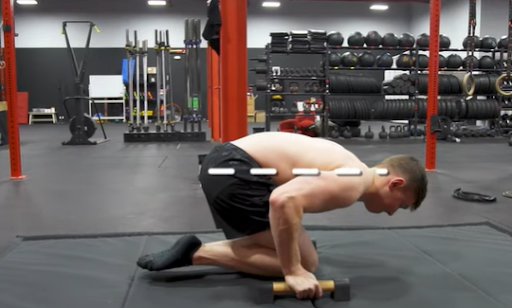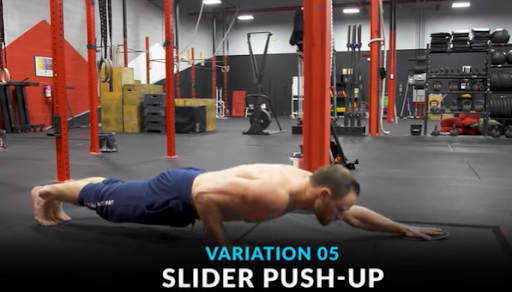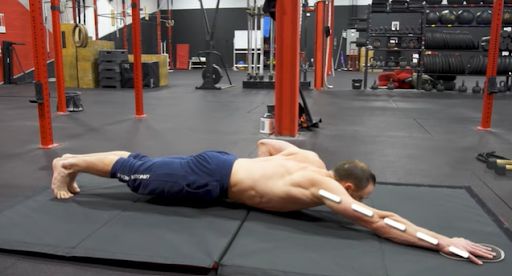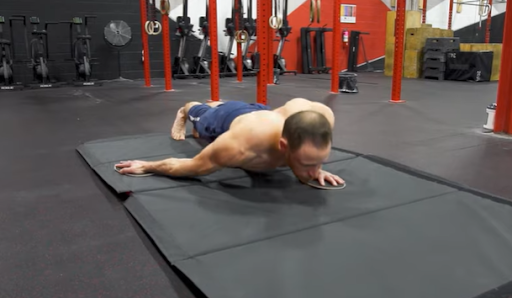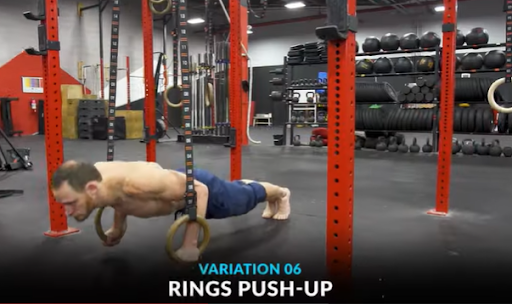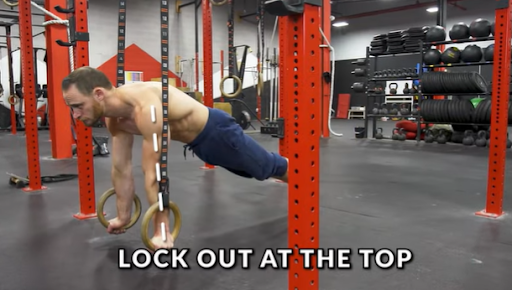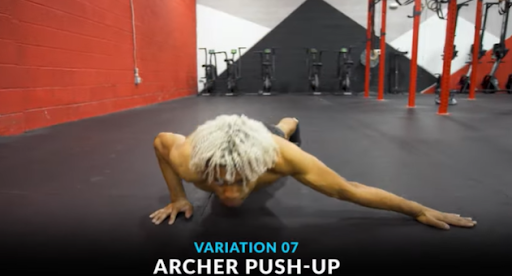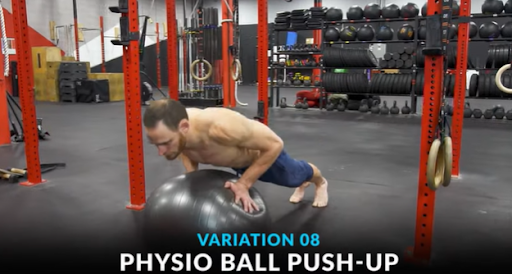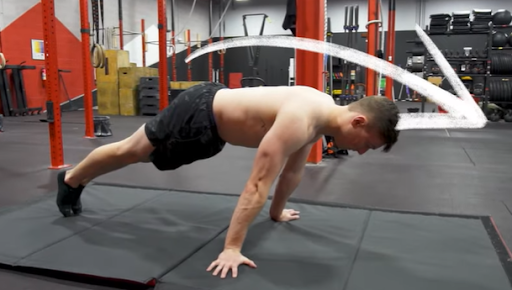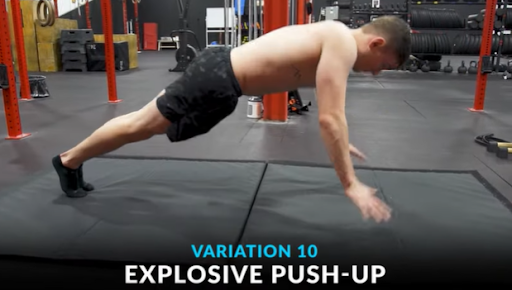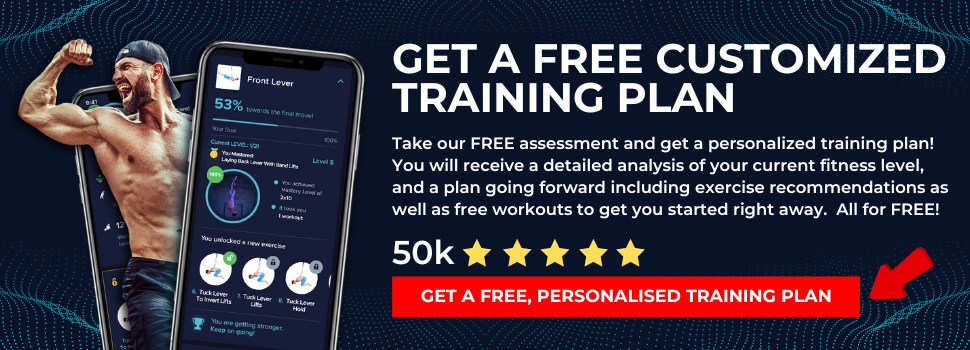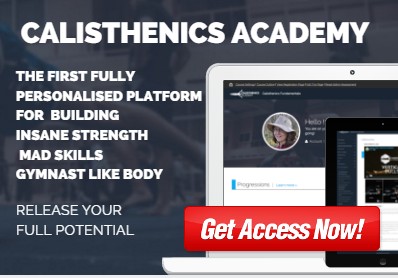Have you ever contemplated elevating your push-up routine to the next level?😱
Get ready for a thrilling ride because you’re about to start an exciting journey. You’ve mastered the 📍regular push-up, but here’s the twist: it’s not just about doing it.
A treasure trove of variations awaits, ready to redefine your workout experience and catapult you toward your fitness goals.
Beyond the basic push-up lies a realm of possibilities. It’s not just a workout; it’s an adventure waiting to unfold. These advanced push-up variations are your secret weapon, whether you aim to build strength, enhance endurance, or sculpt a chiseled physique.
Think of 📍push-up variations as the secret sauce that transforms a traditional exercise into a dynamic, multifaceted workout experience. They’re not just about spicing up your routine; they strategically target different muscle groups, introducing refreshing challenges to your body.
In this article, we’ll plunge into the diverse world of push-up variations, dissecting each to understand how it contributes to your unique fitness goals. Let’s dive in!
👊 Mastering the Classic Push-Up
Before delving into advanced push-up variations, it is vital to appreciate the classic push-up as more than just a stepping stone. The cornerstone lays the groundwork for a successful and sustainable fitness journey.
The classic push-up is a fundamental exercise that has withstood the test of time, proving to be an indispensable component of any comprehensive fitness routine. Before delving into advanced push-up variations, it is vital to master the classic push-up, as it serves as the foundational building block for enhanced strength, endurance, and overall physical fitness.
Check out this YouTube video on 🎥 perfecting push-ups:
The classic push-up is a compound exercise that engages multiple muscle groups, making it an efficient and effective workout. The primary muscles targeted during a push-up include the chest, shoulders, triceps, and core muscles, including the rectus abdominis and transverse abdominis.
Dive deeper into the world of push-ups with our comprehensive series of articles, designed to enhance your understanding of this versatile compound exercise.
- 📍 Understanding the Challenge: Unveiling Reasons Why Push-Ups Are Hard
- 📍 Maximizing Push-Up Variations for Targeted Muscle Engagement: A Comprehensive Guide
- 📍 Shocking Reasons Why You Shouldn’t Do Push-Ups
- 📍 How Beginners Do Push-ups: Mastering the Basics
🔥 Importance of Mastering the Classic Push-Up
By mastering the classic push-up, individuals build not only physical strength but also a resilient foundation that prepares them for the challenges of advanced variations, ensuring a journey towards greater heights in fitness.
- ✊ Building Upper Body Strength: Develops foundational strength in the chest, shoulders, and arms.
- ✊ Core Stability: Enhances overall functional strength and reduces the risk of injuries by demanding core engagement.
- ✊ Full Body Activation: Engages multiple muscles simultaneously, promoting holistic fitness improvement.
- ✊ Endurance Development: Builds muscular endurance, vital for sustained physical activity and progression to advanced variations.
- ✊ Perfecting Form and Technique: Offers an opportunity to refine form, alignment, and breathing patterns essential for advanced push-up variations.
- ✊ Injury Prevention: Reduces injury risk by establishing a solid foundation of strength and stability before advancing.
Related article: 📍 The Power of Push-Ups: Unveiling 4 Benefits You Need to Know
🌟10 Advance Push-Ups Variations
1. 💥 Slow Tempo Push-Ups
The slow-tempo push-up is a deliberate variation of the classic exercise, prioritizing a controlled descent and ascent. This technique takes four to five seconds for each phase to engage muscles in the chest, shoulders, triceps, and core. The deliberate ascent challenges muscles concentrically, fostering controlled strength development.
🏆Benefits:
- Strength Development: Increased time under tension enhances muscle activation and strength.
- Muscle Engagement: Slowing down the movement thoroughly engages muscle fibers, contributing to growth.
- Controlled Form: Emphasis on control reduces injury risk and encourages proper form.
- Progression: Offers a natural progression from traditional push-ups, challenging muscles in new ways.
⚡️Considerations
- Alternative Methods: External resistance, like a weight plate or someone applying pressure on the shoulders, intensifies the workout.
- Diverse Options: These resistance methods add an extra challenge, reinforcing the importance of control and strength in the slow-tempo push-up.
2. 💥 Resistive Push-Ups
Resistive push-ups involve adding external resistance to traditional push-ups for an intensified workout. The options include using resistance bands behind the shoulders, manual resistance by having someone push down on the shoulders, or placing a weight plate on the back.
🏆Benefits:
- Increased Muscle Development: External resistance enhances muscle challenge and growth.
- Dynamic Stability: Engages stabilizing muscles for improved balance.
- Versatility: Various resistance options allow customizable workouts.
- Targeted Muscle Engagement: Enables focused training on specific muscle groups.
- Progressive Overload: Follows the principle for continuous muscle adaptation.
⚡️Considerations
- Emphasis on Form: Crucial for effective engagement and injury prevention.
- Equipment and Safety: Ensure secure anchoring and balanced equipment.
- Gradual Progression: Increase resistance gradually to avoid strain.
3. 💥 Single Leg Push-Ups
The single-leg push-up decreases your contact points with the ground, engaging more core muscles. With only two hands and one foot in contact with the ground, this variation demands increased stability and balance, taking your push-up game to the next level
🏆Benefits:
- Core Strength Development: Targets and strengthens the core muscles, including the rectus abdominis, transverse abdominis, and obliques.
- Balance Enhancement: Improves proprioception and balance by challenging stability with only one foot on the ground.
- Increased Difficulty: Intensifies muscle engagement due to reduced contact points, making it more challenging than traditional push-ups.
- Functional Fitness: Mimics’ real-life movements involve single-leg actions, promoting functional fitness and coordination.
⚡️Considerations
- Foot Placement: The non-grounded foot’s placement can be adjusted for variations in muscle engagement and balance challenges.
- Progression: Suitable for progression from partial to full single-leg push-ups as strength and stability improve.
- Proper Form: Maintaining a straight body alignment is crucial for effectiveness and safety, avoiding sagging or piking during the exercise.
4. 💥 Tucked Planche Push-Up
Utilizing parallets or an elevated surface, the tucked planche push-up requires assuming the tuck planche position and performing push-ups. Emphasizing maintaining level hips with shoulders throughout the movement, this variation adds complexity to your push-up routine.
🏆Benefits:
- Shoulder and Chest Strength: Targets shoulders and chest intensively, contributing to enhanced upper body strength.
- Core Engagement: The tucked position engages core muscles, promoting strength and stability.
- Balance and Coordination: Sustaining the tucked planche while executing push-ups improves balance and coordination.
- Progression Towards Advanced Calisthenics: Acts as a progressive step towards more advanced planche variations and advanced push-up techniques.
⚡️Considerations
- Equipment Usage: Perform on parallel bars or an elevated surface for proper form and range of motion.
- Gradual Progression: Start with static tucked planche holds before incorporating dynamic push-ups for mastery.
- Proper Form: Maintain a tucked position with level hips for effectiveness and safety of the tucked planche push-up.
5. 💥 Slider Push-Up Variations
Incorporating sliders adds a dynamic element to your push-ups. In the first variation, one half of the body reaches forward with straight arms while the other half performs the push-up, alternating sides by reaching forward, returning, and switching.
The second variation involves one half doing a push-up while the other arm reaches rearwards towards the hips, resembling a Maltese-type position. This movement continues by returning to the top and alternating sides. The exercise emphasizes one locked arm while the other engages in bend arm strength.
🏆Benefits:
- Enhanced Upper Body Strength: Engages chest, shoulders, and arms more intensely, promoting increased upper body strength.
- Core Activation: The dynamic nature of the exercise requires constant core engagement for stability during sliding movements.
- Bilateral Coordination: Alternating sides challenge bilateral coordination, improving overall motor skills.
- Asymmetrical Muscle Engagement: The one-armed emphasis in each variation promotes asymmetrical muscle engagement, contributing to balanced strength development.
⚡️Considerations
- Slider Usage: Utilize sliders or a similar apparatus to facilitate smooth sliding movements and reduce friction.
- Gradual Progression: Start with basic slider push-ups before advancing to variations, ensuring proper form and control.
- Focus on Stability: Due to the dynamic nature, emphasize stability throughout the movement to prevent injuries and optimize muscle engagement.
6. 💥 Ring Push-Ups
Performing push-ups on rings introduces an open chain element, making it more challenging due to increased instability. The rings are positioned close to the ground, aligning with the feet, allowing for a neutral grip during the push-up. The emphasis is on completing a lockout at the top of the movement.
🏆Benefits:
- Enhanced Instability: The open chain nature of ring push-ups introduces instability, requiring increased muscle engagement for balance and control.
- Neutral Grip Activation: The neutral grip position on the rings activates different muscle fibers in the chest, shoulders, and arms compared to traditional push-ups.
- Full Range of Motion: Rings allow for a greater range of motion, providing a deeper stretch and contraction during the push-up.
- Increased Difficulty: Due to the instability and open chain nature, ring push-ups are more challenging, leading to heightened strength and stability gains.
⚡️Considerations
- Ring Height: Set the rings close to the ground, aligning them with your feet to maximize the challenge and maintain proper form.
- Stability Focus: Given the nature of the open-chain exercise, prioritize stability throughout the movement to prevent swinging or wobbling.
- Gradual Progression: Start with basic ring push-ups and gradually progress to more challenging variations as strength and stability improve.
7. 💥 Archer Push-Up
Similar to slider push-ups, archer push-ups involve lateral arm movement. With one arm going laterally to a T position while the other performs the push-up, this asymmetrical exercise adds complexity and targets different muscle groups.
🏆Benefits:
- Asymmetrical Muscle Engagement: The unilateral nature of the archer push-up engages one side of the upper body more intensely at a time, promoting balanced muscle development.
- Fly-Like Movement: The extended arm’s lateral movement mimics a fly-like motion, activating the chest muscles differently than a traditional push-up.
- Balance and Coordination: The asymmetry challenges balance and coordination, requiring focused stability throughout the exercise.
- Customizable Difficulty: The degree of separation between the feet allows for difficulty customization, making it adaptable for varying fitness levels.
⚡️Considerations
- Foot Separation: Introduce a slight separation between the feet to enhance stability and prevent rotation during the exercise.
- Alternating Arms: Ensure a smooth transition between arms to maintain fluidity and engage both sides of the upper body effectively.
- Customization: Adjust the degree of foot separation based on individual comfort and the desired difficulty level.
8. 💥 Physio Ball Push-Up
Replacing the stable ground with an unstable surface, the physio ball push-up increases the demands of shoulder stability. Stabilizing throughout the push-up on the physio ball challenges multiple muscle groups, creating a dynamic and engaging exercise.
🏆Benefits:
- Enhanced Shoulder Stability: The unstable surface of the physio ball demands increased shoulder stability, engaging muscles for balance and control.
- Core Activation: Stabilizing on the physio ball engages the core muscles, promoting additional strength and stability.
- Dynamic Instability Challenge: The unpredictable movement of the physio ball introduces dynamic instability, requiring constant adjustments for a controlled push-up.
- Full Range of Motion: Performing push-ups on the physio ball allows for a greater range of motion, enhancing the stretch and contraction of muscles.
⚡️Considerations
- Stability Focus: Emphasize shoulder stability throughout the movement to prevent wobbling or loss of balance on the physioball.
- Gradual Progression: Start with basic physio ball push-ups and progress to more challenging variations as strength and stability improve.
- Proper Form: Maintain a straight body alignment and controlled movement for safety and effectiveness on the unstable surface.
9. 💥 Pseudo Planche Push-Up
Leaning forward before executing the push-up, the pseudo-planche push-up places a heavier load on the anterior deltoids. Adjusting the difficulty by varying the degree of forward lean, this variation offers a unique challenge for your upper body.
🏆Benefits:
- Anterior Deltoid Emphasis: The pseudo-planche push-up specifically targets the anterior deltoids, promoting increased strength and development in this muscle group.
- Increased Difficulty with Forward Lean: The further you lean forward, the more challenging the exercise becomes, enhancing the difficulty for advanced users.
- Maintained Body Alignment: Emphasis on maintaining a straight body prevents common mistakes such as hip hinging, ensuring optimal targeted muscle engagement.
- Continuous Challenge: The dynamic nature of moving from a plank to a forward lean and back challenges the muscles throughout the entire range of motion.
⚡️Considerations
- Forward Lean Gradation: Gradually increase the forward lean as strength and proficiency improve, ensuring a progressive and controlled approach.
- Form Emphasis: Prioritize a straight body alignment without hip hinging to target the anterior deltoids and overall muscle engagement effectively.
- Return to Plank: Ensure a controlled return to the plank position after completing each push-up to maintain stability and control.
10. 💥 Explosive Push-Up
The explosive push-up focuses on generating speed and force, allowing you to lift off the ground momentarily. This plyometric variation promotes power and explosiveness, providing a dynamic aspect to your push-up routine.
🏆Benefits:
- Power and Speed Development: The explosive nature of the push-up focuses on generating maximum power and speed during the upward phase, contributing to improved explosive strength.
- Full Body Activation: This variation engages multiple muscle groups simultaneously, promoting full-body activation and coordination.
- Plyometric Training Benefits: The explosive push-up incorporates plyometric elements, enhancing muscle responsiveness and promoting fast-twitch muscle fiber activation.
- Dynamic Cardiovascular Engagement: The rapid and robust movements increase cardiovascular demands, adding a dynamic cardio component to the exercise.
⚡️Considerations
- Controlled Landings: Emphasize controlled landings after each explosive push-up to minimize impact on joints and ensure safety.
- Gradual Progression: Beginners should start with controlled explosive movements and gradually increase the intensity as strength and power improve.
- Focus on Form: Maintain proper form, including straight body alignment and controlled movements, to maximize the effectiveness of the exercise and reduce the risk of injury.
📌Here’s the YouTube video on 10 push-up variations:👇
🧐Frequently Asked Questions
🔎 Why should I incorporate push-up variations into my workout routine?
Push-up variations target different muscle groups, add variety to your routine, and challenge your body uniquely, promoting overall strength and muscle development.
🔎 How do I know which push-up variation is suitable for my fitness level?
Begin with variations that match your current strength and gradually increase the difficulty level as you gain muscle and endurance.
🔎 Are push-up variations effective for muscle growth?
Yes, push-up variations can stimulate muscle growth by introducing new challenges and increasing the intensity of the exercise.
🔎 Can I combine different push-up variations in a single workout?
Absolutely! Mixing variations can target various muscle groups and add versatility to your routine, promoting overall fitness.
🔎 Do I need any equipment for push-up variations?
While many variations require no equipment, some, like resistive push-ups, may involve resistance bands or additional weight. However, most can be done with just your body weight.
🔎 How can I avoid injury while performing advanced push-up variations?
Emphasize proper form, warm up adequately, and progress gradually. If using external resistance, ensure the equipment is secure and prioritize controlled movements to reduce the risk of injury.
💥 Conclusion
In calisthenics, 🎯 the push-up is a timeless cornerstone, laying the foundation for many advanced variations that can elevate your fitness journey to unprecedented heights.
Before delving into the diverse landscape of advanced push-up techniques, it’s crucial to acknowledge the classic push-up as more than a mere stepping stone—it is the bedrock of strength, endurance, and overall physical prowess.
Incorporating advanced push-up variations into your routine promises a holistic fitness experience, enriching your strength and enhancing stability and overall athletic performance.
As you master advanced push-up variations, remember that personalized training is the key to sustained progress.💯
The Movement Athlete app provides a curated selection of exercises tailored to acknowledge each individual’s unique strengths, mobility, and flexibility levels. Take the assessment now and unlock the potential for a personalized and transformative fitness journey.

